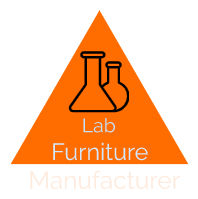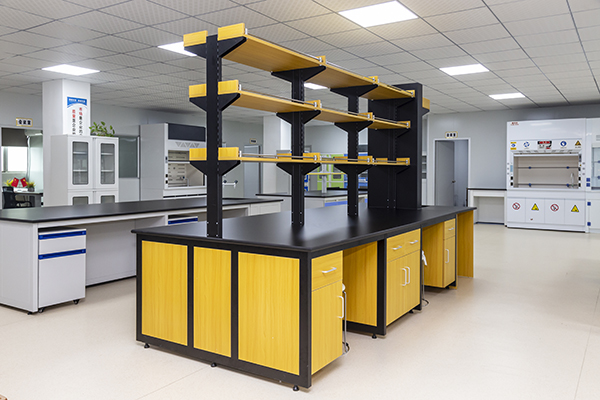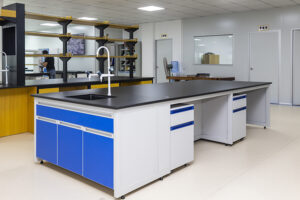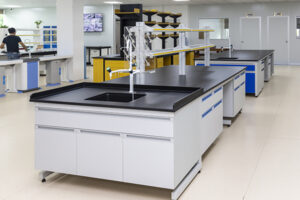What Is A Lab Workbench?
A Laboratory workbench is lab furniture used to place the lab instrument or carry out the lab experiment. In addition, it is a lab table or workstation for lab staff.
History of Lab Workbench
The laboratory workbench occupies a critical position in the entire laboratory furniture in today’s laboratory field. The performance of the laboratory table directly affects the safety of laboratory operators and the service life of the laboratory table. The laboratory workbench has evolved from the most primitive operating table to the professional laboratory table: civil tile veneer, civil fireproof board, natural stone, surface physical and chemical board, solid psychological board, stainless steel ceramics, epoxy resin Board, and other innovative changes. In the early laboratory market, raw materials such as granite and marble were used as laboratory bench tops. Still, granite and marble were not resistant to corrosion by chemical reagents such as strong acid and were gradually replaced by veneer physical and chemical boards. Later, because the veneer physical and chemical board must be bonded with other substrates such as wood and other substrates before it can be used, which is not suitable for water cabinets, a solid physical and chemical board, that is, a phenolic resin board, appeared, but if the surface of the Phenolic Resin Benchtops was scratched, can not be repaired, can not be polished and refurbished.
In the 1990s, the epoxy resin top workbench was successfully dedicated to laboratories. Because of its excellent performance, it is a popular product of international laboratory tabletop. More than 95% of the owners in the U.S. market use epoxy resin workbench because they deeply realize that safety factors come first in the laboratory, and epoxy resin boards are the safest and most reliable lab tabletop material. Therefore, epoxy resin board is the current trend for laboratory furniture.
Table of Contents
Category of Bench Top
Laminate Bench Top
It is made by pressing layers of surface paper, colored paper, and kraft paper. The thickness of non-structural materials is generally 0.9mm, which must be pasted with the base material.
Features: There are different defects for 65% nitric acid, 98% sulfuric acid, 60% chromic acid, 48% hydrofluoric acid, and phenol. Poor high-temperature resistance, after the surface is damaged, the interior is not resistant to corrosion and cannot be repaired.
Marble Bench Top
It is a medium-hard stone with various colors, bright colors, dense material, solid compressive resistance, and low water absorption.
Features: The bench top is wear-resistant, not deformed, and easy to clean. Not suitable for contact with reagents, not acid-resistant.
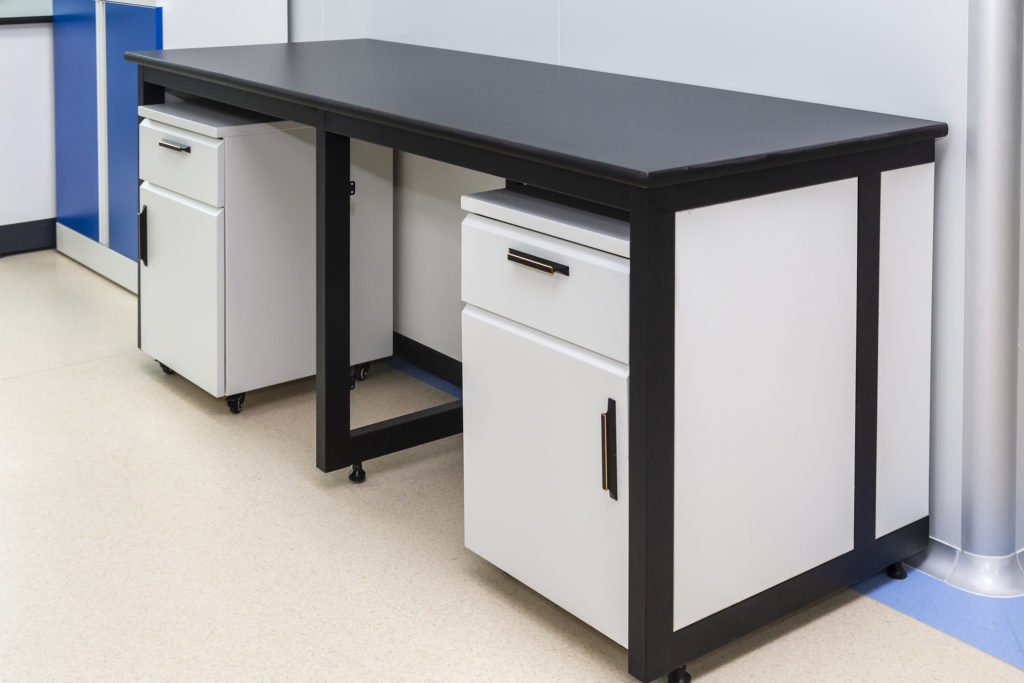
Phenolic Resin Benchtops
It is made from kraft paper, colored paper, and unique surface paper impregnated with particular component phenolic resin formed by high temperature and high-pressure treatment. First, the wood fiber is soaked in phenolic resin and then stirred and pressed.
Features: The surface is resistant to chemical reagent corrosion, anti-static, etc.;
use below. After the surface is damaged, the interior is not immune to corrosion and cannot be repaired.
Stainless Steel Bench Top
Stainless steel bench tops are widely used in clean laboratories and sterile biological experiments.
Suitable for pharmaceutical, food, and other industries
Features: No capillary pores, no bacterial retention, good tensile strength, easy to clean, and inhibit bacterial growth. Various styles of bench tops can be processed upon request. Corrosion resistance is not good, so it is unsuitable for chemical laboratories.
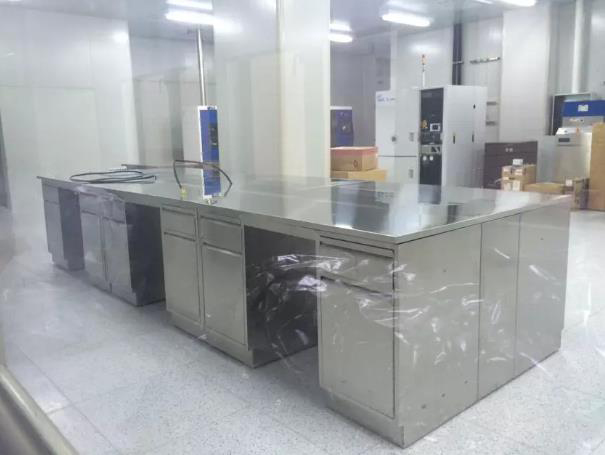
Laboratory Ceramic Bench Top
It combined blue china clay, kaolin, and feldspar and added a variety of unique materials. Then it is calcined in an industrial oven at a high temperature above 1250 °C for a long time.
Features: Corrosion resistance, easy to clean, impact resistance, scratch resistance, fire resistance, high-temperature resistance, good load-bearing, anti-aging. However, the on-site processing performance is poor; it cannot be repaired after being broken, the size is small, and there are relatively many seams when used in large laboratory benches. Therefore, laboratory ceramics are used more in detoxification cabinets.
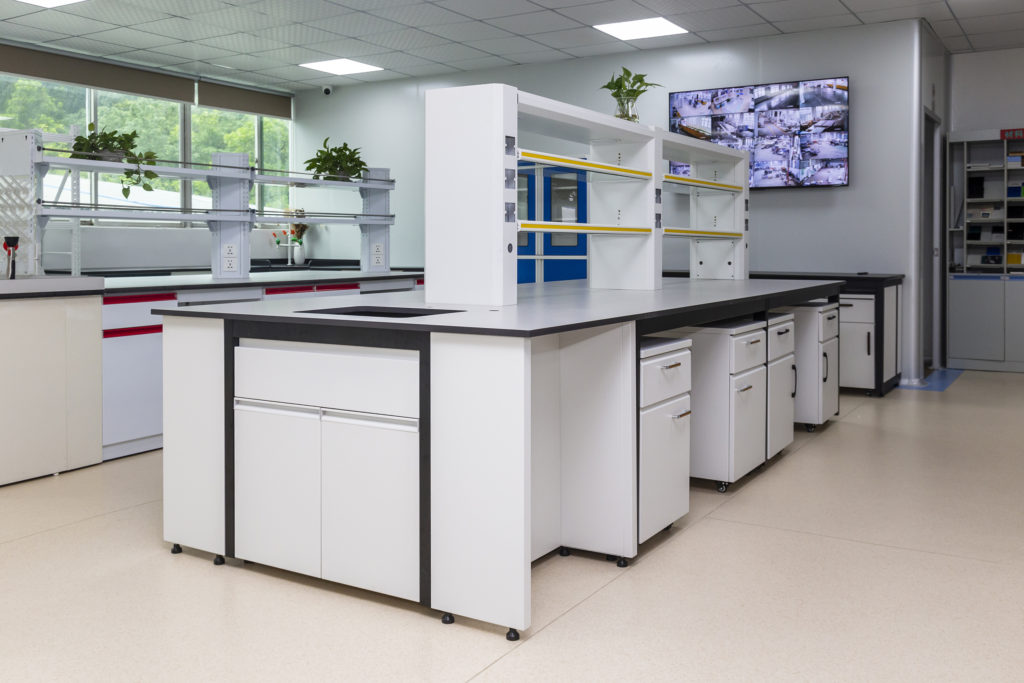
Epoxy Resin Bench Tops
This type of bench top is made from emery, glass fiber, epoxy resin powder, talcum powder, catalyst, curing agent, and pigment are poured into a flat mold after high temperature and vacuumed, stirred evenly in a high-temperature vacuum and bubble-free environment, acleanedmed and then cured at high temperature for 8 hours.
Features: chemical resistance, antibacterial, impact resistance, non-conductive, easy to clean, wear-resistant, moisture-proof, UV-resistant, self-extinguishing flame, one-piece molding, no delamination, no expansion, no asbestos, high-temperature resistance, refurbished, no Seam stitching, good appearance, and all-around performance.
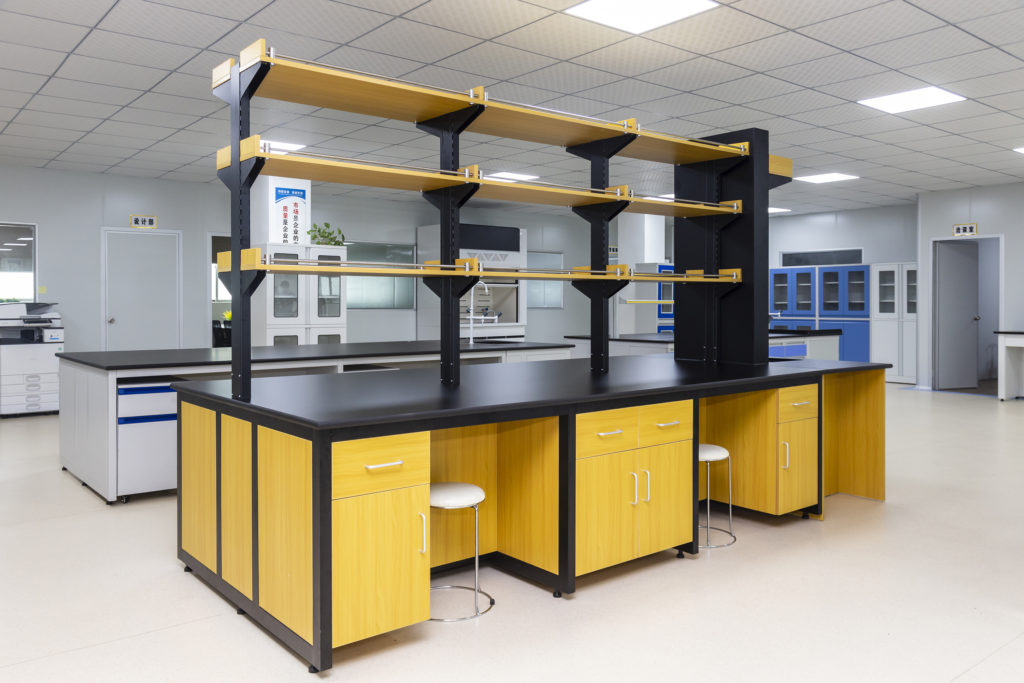
The Requirement of Different Lab Work Bench Top
The design of each laboratory will have unique requirements for the bench top. Depending on the type of laboratory, must generally consider the following principles:
Chemistry Laboratory
Particular emphasis should be placed on chemical resistance, ease of cleaning, moderate color, load-bearing, abrasion resistance, and heat resistance of bench top.
Physics Laboratory
Particular emphasis should be placed on physical tension, abrasion resistance, impact resistance, and heat resistance.
Biological Laboratory
Particular emphasis should be placed on stain resistance, ease of cleaning, abrasion resistance, and resistance to bacterial and fungal attacks.
Electronics Lab
Emphasis should be placed on insulating characteristics, non-conductive strength, and physical tension.
Mechanical Laboratory
The focus should be on resistance to physical damage.
Thermal Energy Laboratory
Focusing on the temperature requirements.
There are other types of laboratories. In many practical situations, many laboratories are not single and may combine the above types. For safety reasons, the need for evaluation bench tops is based on consideration of the harshest areas of the laboratory. Especially fume hoods and sink areas etc.
